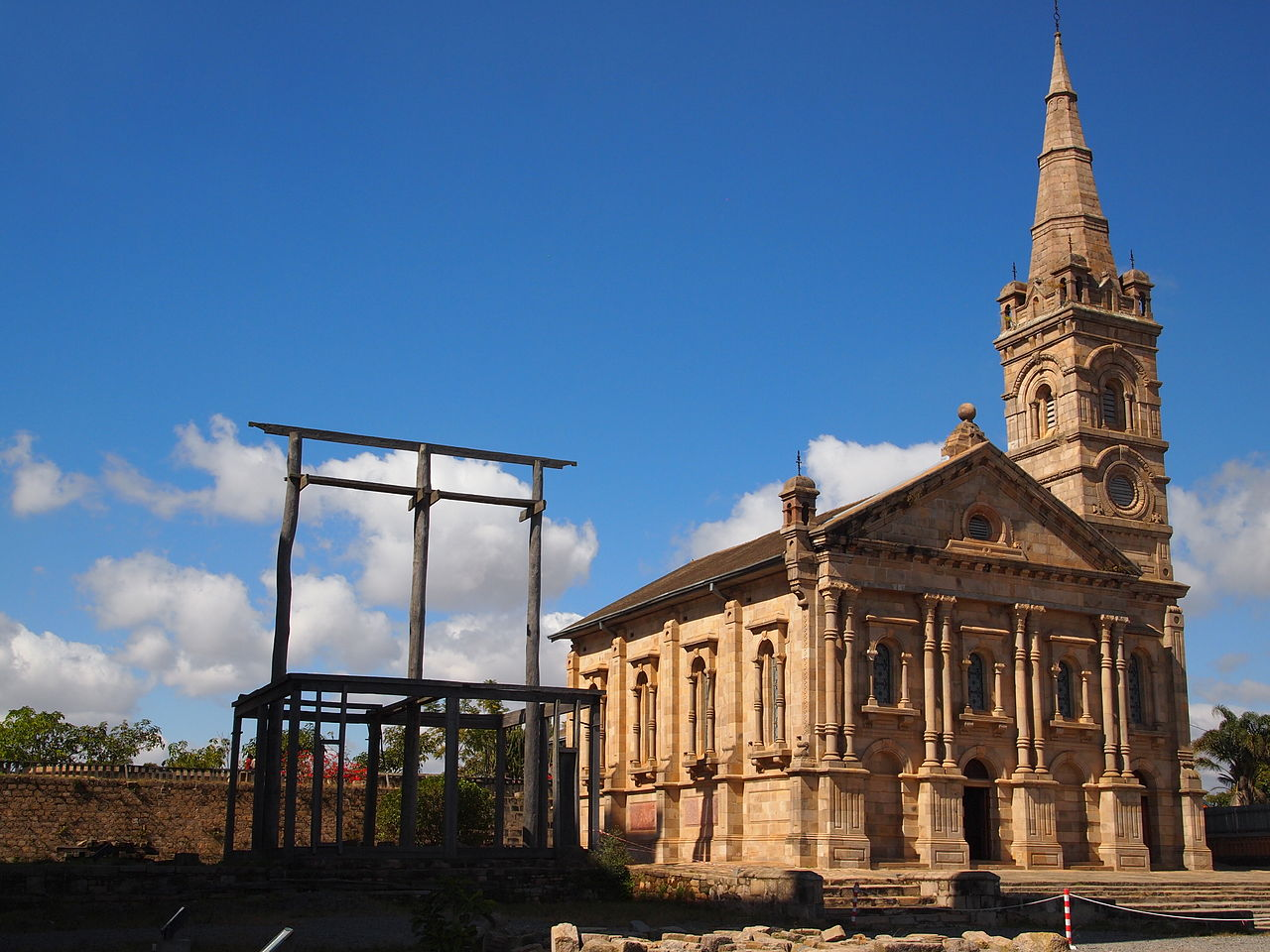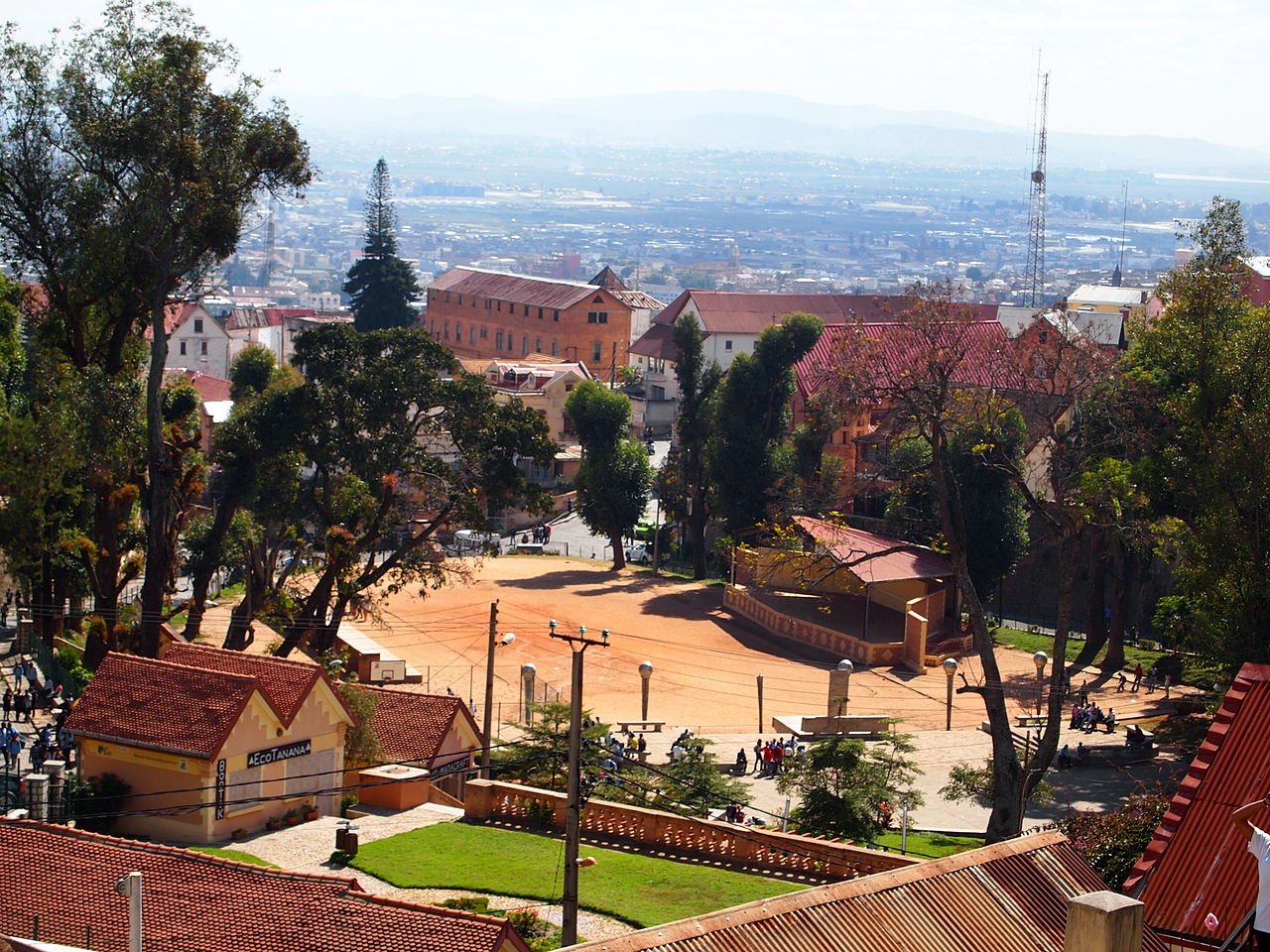 |
| Ranavalona III was crowned empress of Madagascar in the midst of the first Franco-Hova War |
From Aksum to Zimbabwe, Casablanca to Cape Town, learn about the fascinating civilizations and stories of Africa on the first dedicated Pre-Colonial African history podcast.
Monday, December 18, 2023
S4E27: Independence (Partially) Defended
Monday, December 4, 2023
S4E26: The Malagasy Take Manhattan
 |
| Ravoninahitriniarivo: The Leader of the Malagasy Diplomatic Expedition |
 |
| French Cruiser Forfait, one of the ships which blockaded Toamasina in 1882 |
Monday, November 20, 2023
S4E25: Ranavalona II - Madagascar's Christian Queen
 |
| The Palace of Rainilaiarivony |
 |
| The Royal Chapel at the Rova of Antananarivo |
 |
| To relieve his country from the currency crisis of 1879, Rainilaiarivony attempted to import large quantities of Indian rupees |
Sunday, November 5, 2023
S4E24: The Brother's Coup and First Malagasy Constitution
 |
| Prime Minister Rainilaiarivony |
 |
| Empress Rasoherina |
 |
| 1881 Treaty of Friendship between the United States and Madagascar |
Monday, October 23, 2023
S4E23: Radama II
 |
| Radama II's coronation by a Catholic Priest |
Radama II had a short reign over Madagascar, and his legacy is heavily debated. Charitable accounts of his reign paint him as a forward-thinking and humanitarian reformer, the "Renaissance Prince of Madagascar." However, more critical accounts highlight his capitulation to foreign interests and unwillingness to adhere to Merina norms of power sharing, leading to a dysfunctional government.
 |
| Radama II and his wife, Radobo |
Monday, October 9, 2023
S4E22: The Lambert Coup
 |
| Joseph Lambert, labelled here with his nickname "Duke of Imerina", which he earned due to his control over |
Following the French invasion of Madagascar, the relationship between Ranavalona and the nations of Europe were at an all-time low. However, at the urging of her son, Prince Rakoto, and new moderate prime minister Rainivoninahitriniony, Ranavalona decided to reopen her country to European immigrants. One of the earliest immigrants to take advantage of this system was Joseph Lambert, a man who made a small fortune utilizing legal loopholes to trade slaves despite the near-global outlawing of the practice.
 |
| Prince Rakoto, the future king Radama II |
 | |
| Prime Minister Rainivoninahitriniony |
Monday, September 25, 2023
S4E21: How Mad was the "Mad Queen" of Madagascar
 |
| Sea mangos (Tangena) the poisonous fruit used in the notorious trial by ordeal |
Much of Ranavalona's negative reputation can be traced back to her falling out with the London Missionary Society. While Ranavalona maintained positive relations with the organization during the early segment of her reign, her perception shifted. She became increasingly concerned that the rising popularity of heavily syncretized Christianity in her kingdom would lead to a decline in veneration of the Merina ancestors, and subsequently a loss of faith in the ideological system which supported her royal legitimacy. Ranavalona banned Christian baptisms and ordered existing concerts to return to their original faith. While most Malagasy christians obeyed the coercive order, the few who refused to de-convert were treated to harsh punishments, often escalating to the death penalty.
 |
| An illustration of the persecution of Christians in Madagascar |
 |
| An artist's render of a Tangena trial: 1873 |
 |
| The Fortress at Toamasina: 1845 |
Sunday, August 27, 2023
S4E20: Progress for the Few, Misery for Many
 |
| Large auction of enslaved workers in Antananarivo, 1860s. |
 |
| Enslaved worker carrying cattle hides, 1880s. |
Sunday, August 13, 2023
S4E19: Western Technology, Malagasy Spirit
 |
| The remnants of one of the blast furnaces at Mantasoa |
Malagasy political priorities were massively altered by the failed French invasion of Madagascar in 1829. While the attackers had ultimately been expunged, the refusal of the Malagasy's British allies to support them in the war effort resulted in a new premium being placed on developing a military capable of independently defending Imerina from foreign attacks.
 |
| James Cameron, LMS missionary and artisan, pictured here several decades after his arrival in Madagascar. |
 |
| Jean Laborde, the French blacksmith turned industrialist, had a close relationship with the Malagasy royal family |
 |
| The Mantasoa Industrial Complex |
Monday, July 31, 2023
S4E18: The Rise of the "Mad Queen" of Madagascar
 |
| 1905 portrait of Ranavalona I |
 |
| Enslaved workers packing rice - 1856 |
Monday, July 17, 2023
S4E17: The Forges of Amoronkay
 |
| Malagasy workers running an iron forge. |
 |
| Chinatown, Port Louis Mauritius, ~1860s |
 |
| Bezanozano porters carrying cattle skins to Toamasina |
Sunday, July 2, 2023
S4E16: The Conquest of Toamasina
 |
| By 1817, Toamasina (Tamatave) was the busiest port on the east coast of Madagascar |
 |
| Workers unload cargo from an outrigger canoe in Toamasina, circa 1880. |
Toamasina gave Imerina its first major port in its history, as well as a direct line of communication with the outside world.
 |
| Radama (on the upper left horse) inspects an army |
Using resources acquired from his deal with the British, Radama assembled a modern army equipped with the latest firearms, artillery, and even horses, an otherwise unknown sight on Madagascar. The new Merina army proved unstoppable, with only the former hegemons of Madagascar, the Sakalava kingdoms, putting up successful long term resistance during Radama's reign.
 |
| Map of Radama's Conquests of Madagascar |
 |
| The king's palace: Tranovola or the Silver House |
Monday, June 19, 2023
S4E15: Radama the Great
 |
| Radama, as depicted in an illustration by William Fitzwilliam Owen |
If his father is the most remembered king in Madagascar, Radama is probably the best-known Malagasy king in the rest of the world. Radama is famous not only for leading the first major push to unify his home island but also for his later efforts to modernize and industrialize the Merina Empire. But how did this fascinating man come to power in the first place? Today, we track the rise of Radama from the heir to the kingdom to the man synonymous with the formation of Malagasy identity.
The beginning of Radama's reign was full of chaos. Even before taking the throne, he had already been the target of multiple assassination attempts by brothers, forced into an unhappy marriage, and served in the army on multiple campaigns. After taking the throne, he had to put down rebellions by his Betsileo and Sihanaka subjects.
 |
| Ifanadiana, Madagascar. The hill in the background is the site of the "martyrdom" of the Betsileo soldiers. |
 |
| A pirate graveyard on Nosy Boraha |
Radama's greatest ambition for conquest would have to wait, though. He specifically desired to conquer the eastern coast of Madagascar. The eastern coast had recently undergone a cultural transformation with the arrival of swarms of European and American pirates to the region. One pirate from New York even established a colony on the island of Nosy Boraha. The arrival of pirates began a cultural and political transformation on the east coast, with some Malagasy using pirates as mercenaries, trading with the seafarers, and some even marrying and having children with pirates. Malagasy who adopted elements of European culture from European pirates and merchants were known as Malagasy Creoles, while those who came from a mixed background were called Zana Malata.
 |
| A photo of the old French fort at Fort Dauphin (taken hundreds of years after its abandonment.) |
Our latest premium episode focuses on one of Madagascar's most interesting mixed-race historical figures: the pirate turned king of Madagascar, Abraham Samuel. Listen here.
Sunday, June 4, 2023
S4E14: Andrianampoinimerina part 2 - The Birth of the Merina Empire

 |
| A 1900 sketch of a Betsileo man in traditional attire. |
 |
| Zoma market, for centuries the largest marketplace in Imerina, was one of many markets established by Andrianampoinimerina |
Sunday, May 21, 2023
S4E13: Andrianampoinimerina part 1 - The True Prince
 |
| 1905 Portrait of Andrianampoinimerina by Philippe-Auguste Ramanankirahina |
 |
| The Rova of Ambohimanga remains one of the best-preserved and most visited Merina historical sites to this day. |
 |
| The Hill of Ikaloy, the capital of the Zafimamy Kingdom. |
Monday, May 8, 2023
S4E12: The Crisis of the 18th Century part 2: The Merina Civil War
 |
| During this period of civil war, the Sakalava Kingdoms of Menabe and Boeny exploited Merina polities for tribute payments of cattle and slaves in exchange for military assistance. |
 |
| The Spanish "Real de a Ocho" or "Piece of Eight", the coins which Rakotomavo sought to mint |
The king of Ambohimanga, Rakotomavo, tried to salvage his kingdom's economy with an unsuccessful attempt to counterfeit Spanish pieces of eight to facilitate a competitive advantage in trade with foreigners. The plan failed.
 |
| Enslaved man on a sugar plantation in Mauritius |
In modern Tanzania, the Sultanate of Oman was expanding the spice plantations surrounding Zanzibar. While these plantations had not reached their full potential yet, the 18th century marked the beginning of a period of rapid growth. Throughout the 18th century, the majority of enslaved people exported from Madagascar ended up in this region of East Africa.
Monday, April 24, 2023
S4E11: The Crisis of the 18th Century part 1 - Andriamasinvalona’s Blunder
 |
| The old royal residence at Ambohidratrimo, where Andiramasinavalona was held prisoner. |
The 18th century will be a painful time for the people of Imerina. The once proud kingdom will devolve into a deadly multilateral civil war, splitting into dozens of smaller kingdoms, each suffering from intermittent famine and domination by foreign enemies. How could the kingdom of Andriamasinavalona, rapidly rising to become a major player in Madagascar, fall so far. The inciting incident lays at the feet of the otherwise great king Andriamasinavalona.
The mpanjaka Imerina had spread his kingdom several times beyond what his predecessors would have even considered possible. Could such a large kingdom survive in highland Madagascar? Andriamasinavalona believed that the answer was "no." Instead, he favored transforming the Merina kingdom into a confederation of four smaller states called Imerina Efa Toko, or "Imerina like the Legs of a Cooking Pot." The king's advisor Andriamampandry repeated warned him against the plan, cautioning that the newly empowered princes would immediately seek to make war with each other. But Andriamasinavalona persisted.
 |
| The public square at the Rova of Antananarivo, where Andriamasinavalona announced the new policy of Imerina Efa Toko |
This policy backfired immensely. Almost immediately upon granting his sons sovereign power, they began quarreling. These early disagreements culminated in the prince of Ambohidratrimo luring the father into his fief by intentionally provoking the ire of his subjects, asking his father for assistance against a rebellion, and then locking his father in a basement when he came to assist the prince. The plan worked for several years, with the prince providing commands supposedly based on his father's wishes. However, the other sons soon grew suspicious, and launched a rescue operation for Andrimasinvalona. While the prince of Ambohidratrimo was defeated and the other sons pledged an oath of peace after their father's death not long after his liberation, the kingdom still fell apart into warring duchies soon after. Join us next episode to see how that goes.


